By Leonard
Some people collect stuff: stamps, cars, vintage lawnmowers, etc. Some people collect watches. I’m not one of them. In fact, I desperately avoid hoarding anything. Yet I happen to have a collection of something as usual as four different Sinn U1’s. Here’s a story about an original contemporary watch and what I think makes it special. Context first.
Part One: The watch.
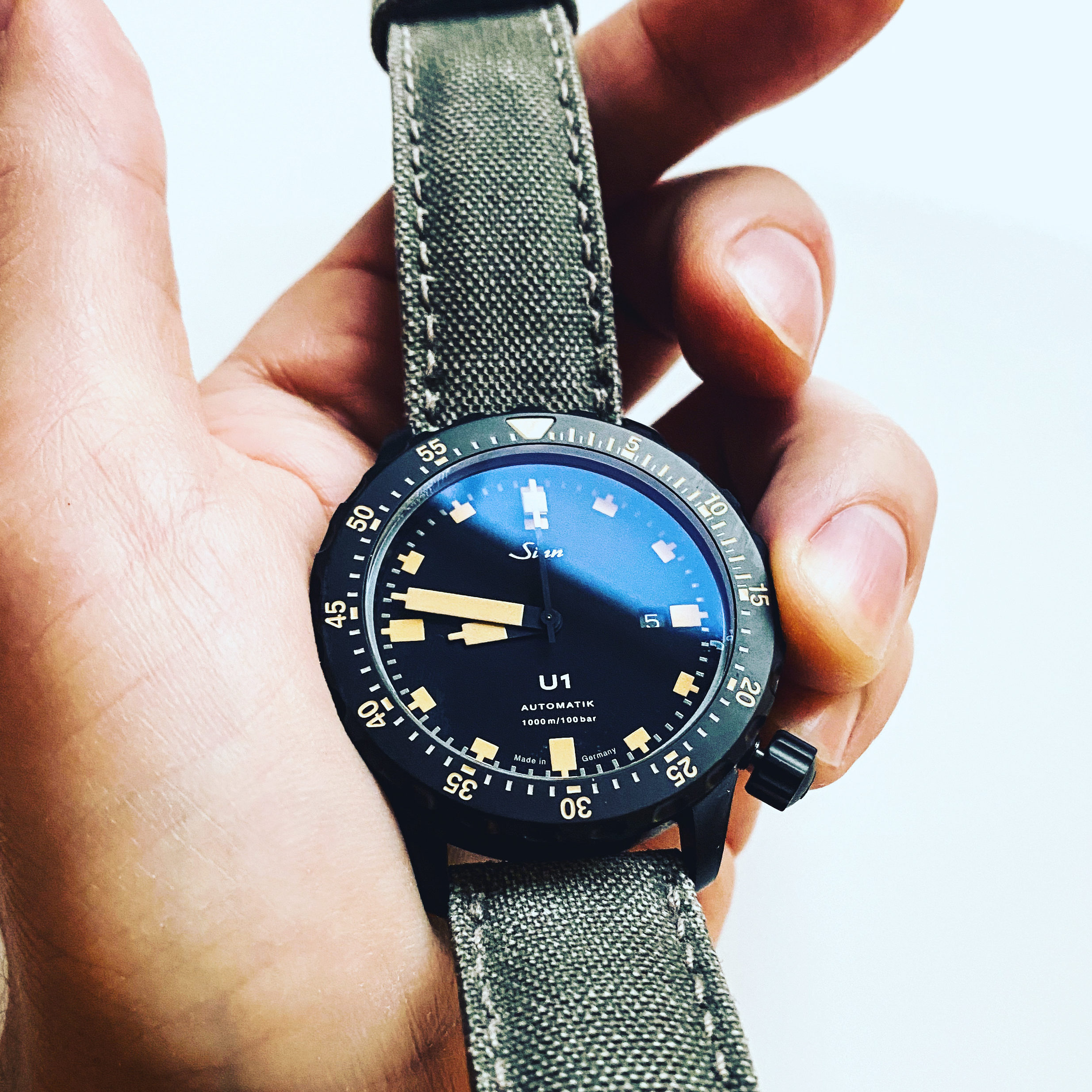
“You know it when you see it”
Anybody above average interested in contemporary, popular philosophy has perhaps read “Zen and Art of Motorcycle Maintenance” by Robert M. Pirsig. While it’s neither a book on either topic (as attested by the author) it does provide an excruciating amount of words to express the notion of quality. The same goes for when I saw the Sinn U1 for the first time.
There were, in particular, four features that when combined created this fascination:
- The concept
- Dial and hands layout
- Case material
- Water resistance
Let’s start with the concept.
The concept: a submarine watch
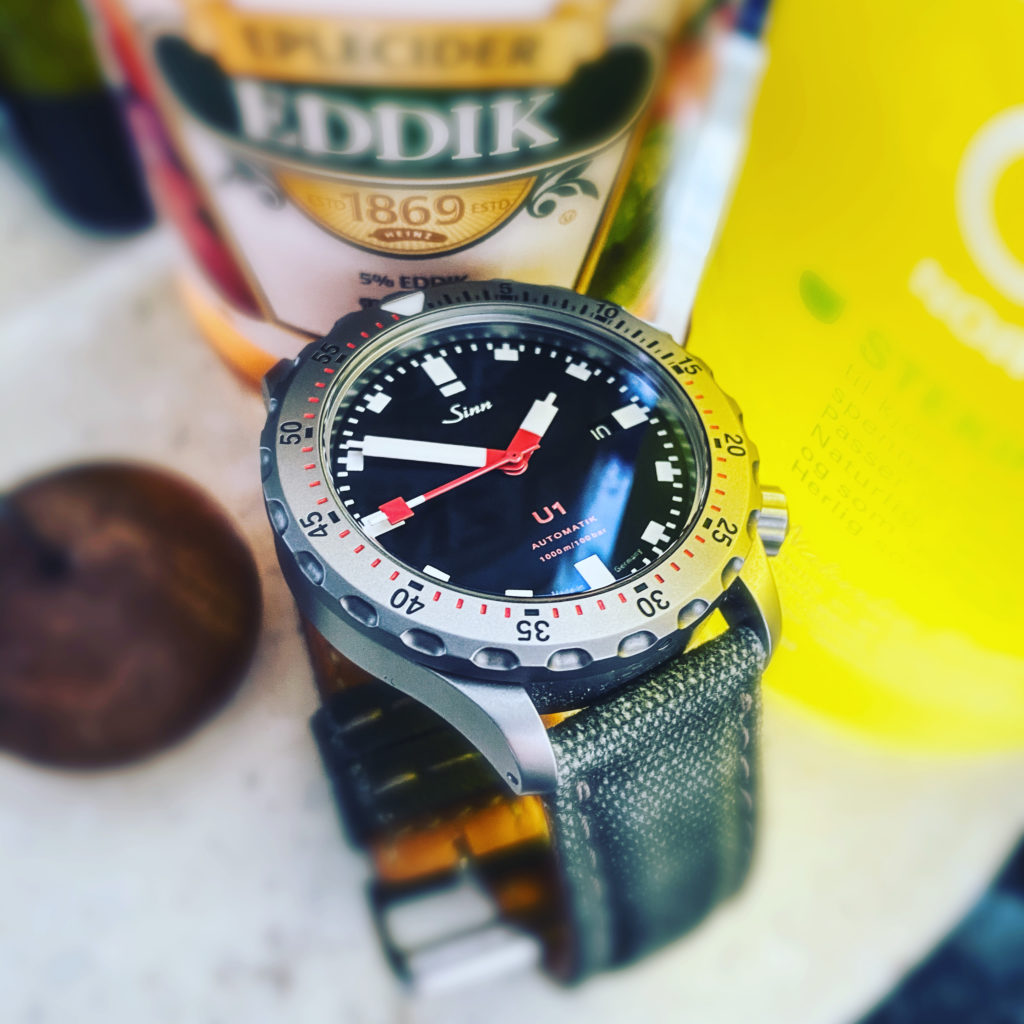
What is really a submarine watch? How would you develop a concept around a submarine? And what is the right answer, if any?
Two of the most iconic diver watches are related to submarines. The Blancpain Fifty Fathoms Bathyscape bears its name after the iconic submarine designed by Auguste Piccard. The name of the other defining diver watch, the Rolex Submariner, refers not to a diver but to someone inside a submerged steel can. The association to diving is arguably more liberating and incites a feeling of freedom, whereas being cramped inside a submarine rather gives claustrophobic associations.
The general idea of a diver’s watch is about expressing a strong feeling of certainty and robustness: “don’t worry, the watch won’t fail you at any depth”. This is exactly what a fair guess would be for the independent German watchmaker’s idea of the U1.
Where the establishment converged in smaller cases and shiny details, the U1 went the other way: large, beads blasted, heavy duty and no-frills. Why would anyone want to wear that kind of watch? Precisely because of that and the statement made.
The most striking features
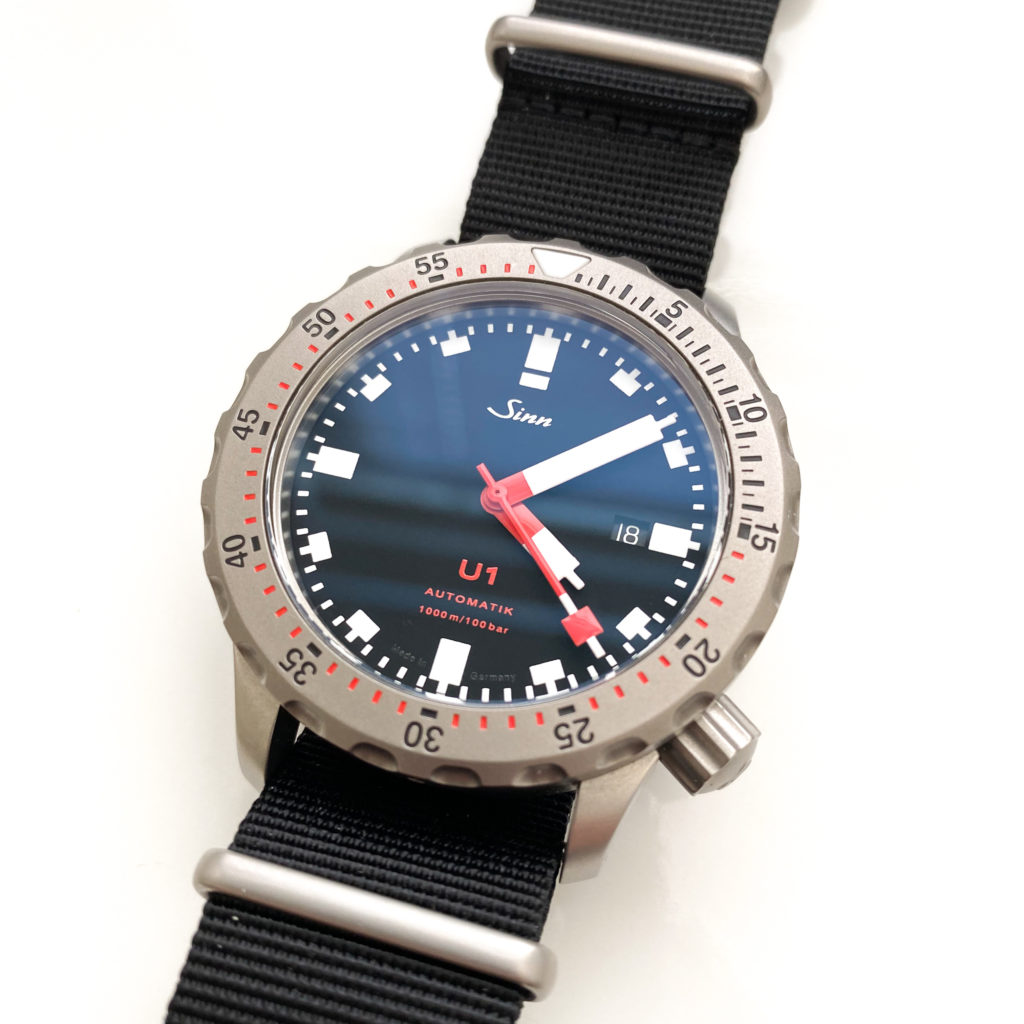
Placed next to any typical diver’s watch, it’s obvious that the U1 has a different approach to the task. The combination of bezel, dial and hands design are all original – at least to some extent.
The bezel discussion can be kept short; it’s an integrated bezel with firm, 60-click action. Instead, the dial and hands are instead more interesting for now.
The bayonet hour and minute hands require an acquired taste and are sometimes referred to as “Lego hands” both by fans and sometimes as a diminutive by others. Combined with an original second’s hand that features a non-luminous square, the hands layout give the watch a completely unique appearance.
In its basic appearance, the hands are red and white, thus creating a very striking contrast to the dial. The hands are completely painted, which has a very satisfying uniformity, compared to e.g. Tudor Pelagos, which also features white hands but with clear contours. The indexes are painted and encircled by a clear tracking line; all creating a very uniform and distinct look.
The dial appears as black. However, in ambient light the matte texture of the dial gets a slight anthracite gray appearance.
German submarine grade steel

Having covered an original concept and dial/hands layout, one would think that would suffice. Think again. True to the submarine concept, Sinn procures submarine grade steel from ThyssenKrupp for the U1 cases and bracelets.
It is unknown to me if the added weight comes from the steel density or simply the amount of material packed. In any case (pun intended), this is not a light piece. The material properties of the steel are supposed to make it better suitable for underwater activities and stress. Furthermore, Sinn offers the option of so-called tegimentation, or hardening surface treatment, that makes the watch close to scratch resistant.
The 44mm case is sandblasted, as are the crown and bezel. The latter, uniform and tegimented, gives the watch very different appearance combined with the dial/hands compared to the generic diver watch.
The weight and size might scare off some, but in fact the watch is quite comfortable to wear. The screw-down crown is positioned at 4:21; unprotected but also clear of the upper side of the hand. The lug-to-lug size is also not extreme. However, the rounded case back gives the watch a geometry that makes it fit very nicely on average-sized wrists like mine.
1000m water resistance – certified

Emphasizing the statement made, the watch comes with a credible 1000m water resistance rating. Everything about the watch screams heavy duty and making the specifications reflect this is a trademark of the watch. While completely unnecessary, it wouldn’t have been the same with a shallower rating.
There is more, but by now it should be clear that the U1 is not a bread-and-butter diver. To sweeten the deal further, the U1 is certified according to DIN 8310 (water resistance) and the diver watch norm DIN 8306; certified by DNV for its depth rating and the European diver device norms EN250 and EN14143.
Part Two: Versions

The Sinn U1 has been around since 2005. Except for the move from ETA 2824 to SW200, there hasn’t been any other changes. Actually, none to my knowledge. This is quite unique. Few other watchmakers leave their watches unchanged for more than a few years before a new version is released. Instead, Sinn has added limited and stock versions to their line-up. Which is both a curse and a blessing.
One of the major criticisms on Sinn as brand is the overflow of different models and watches in the line-up. This is a strategy applied by other major brands too but will be left as a subject to explore in a future post. For the U1 model as such; having a number of variations enables exactly what Sinn did with the U1: continuity.
Sinn U1
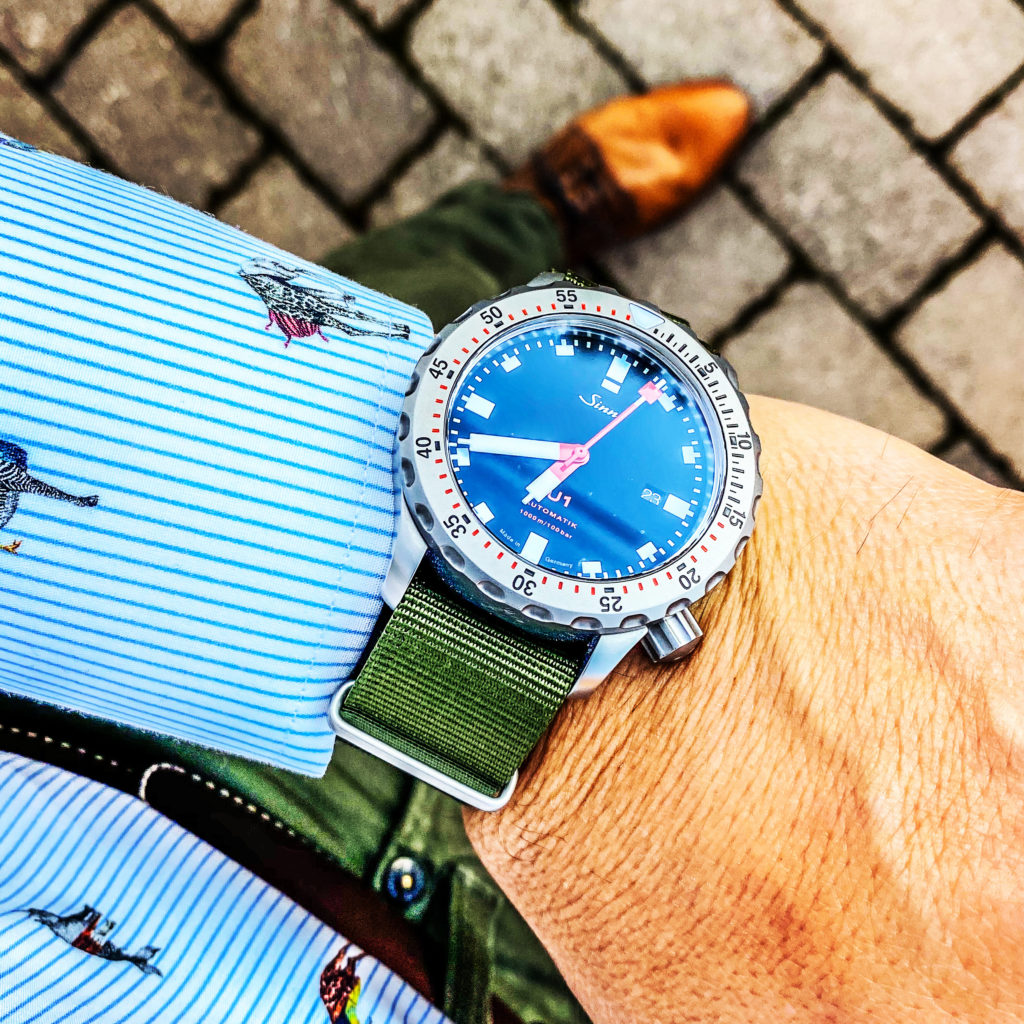
The basic U1 model, with the red/white hands is also probably the most popular one.
Sinn U1 B
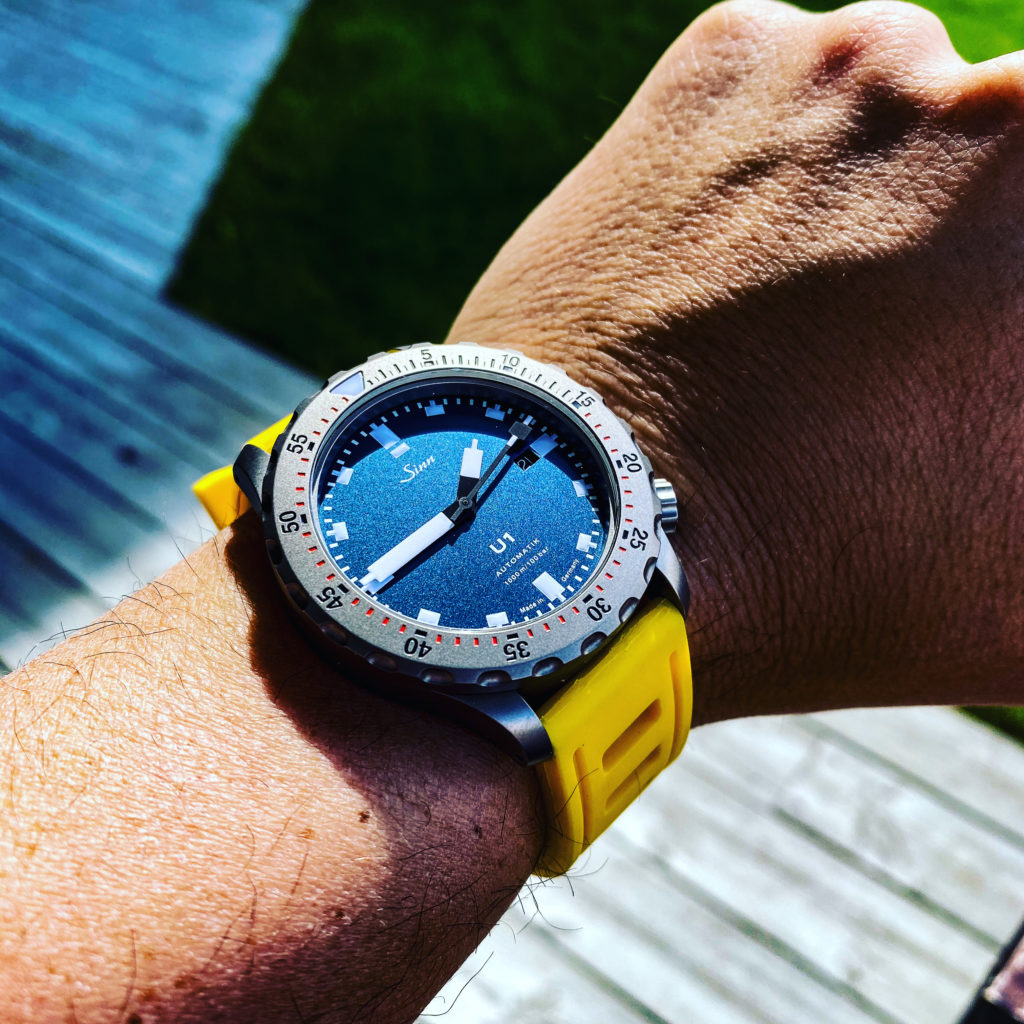
The U1 B is not the regular blue-colored diver watch. The case and bezel are the same as for the U1, but the dial and hands are quite different. The dial is not plain blue, but rather has quite some depth without being metallic. The color shifts between almost black to clear blue depending on light and angle.
Adding to the contrast, all text on the dial is white. None of the stock strap or bracelet options are in my opinion a good match to this watch, which I believe is why it might be less popular. For my part, bright yellow Isofrane strap gets the best out of the piece.
Sinn U1 S E

The U1 S E is fully tegimented and also fully PVD-coated. The bezel, hands and indexes are all off-white / fauxtina and white dial text. The seconds hand square and the tracking line are gray.
The U1 S E is a completely different watch again. It also makes many other brands’ PVD/DLC models look bleak. The U1 S E has a presence and appearance that feels extremely sporty, classy and fresh at the same time. In contrast to the previously two models, the U1 S E is also a strap monster.
The BLU1
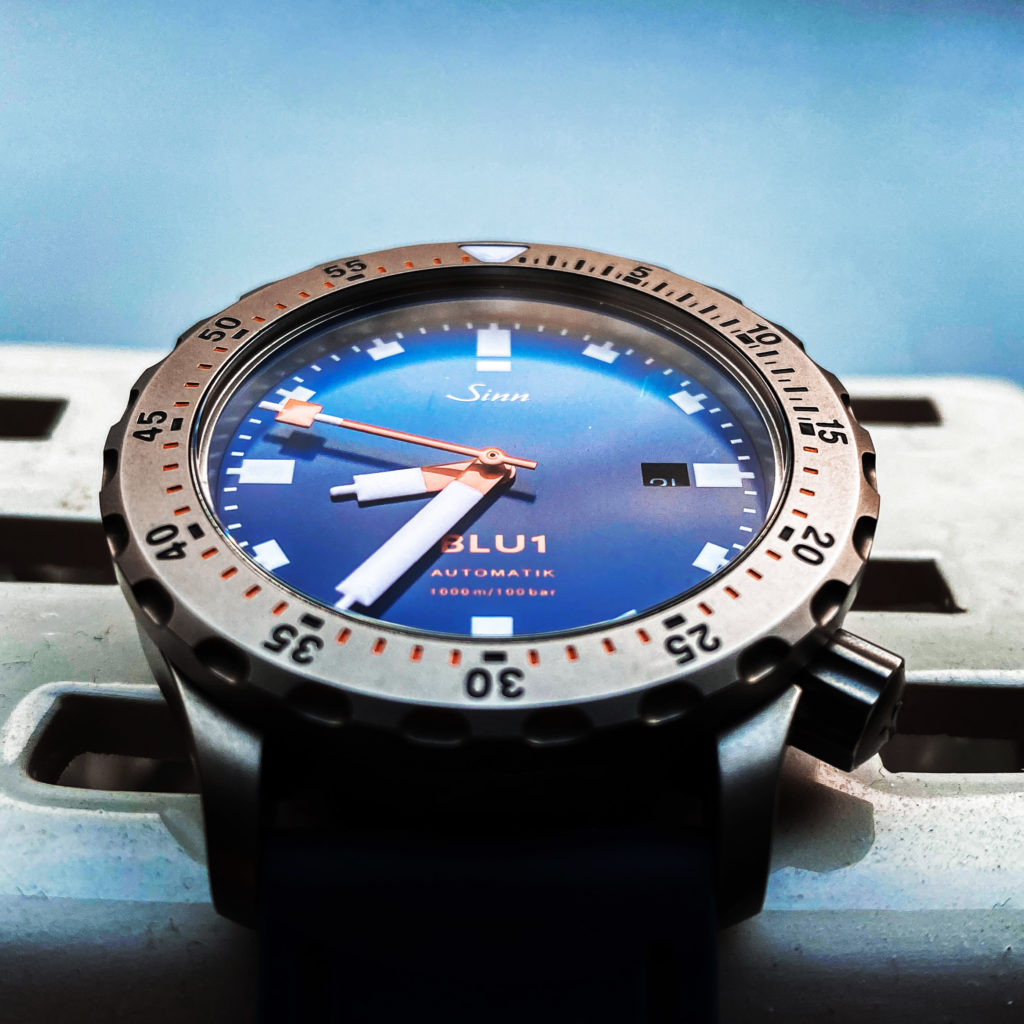
One of the perhaps most desired U1 versions is the 50-pieces limited edition that came in 2017. Celebrating the fifth anniversary as AD for Page & Cooper in UK for Sinn, the Blu1 was released in 35 steel and 15 PVD-coated pieces.
The unique detail is, as typically Sinn, the dial. In this case, a gradient dial going from light blue at 12 o’clock to dark blue at 6 o’clock. The gradient corresponds to the three major light-penetrating zones of the ocean: euphotic, disphotic and aphotic.
The quantitative definition of limited edition is again a topic for another post, but one cannot argue that the Blu1 is anything but limited. Each piece has its edition number on the case back, making them completely unique.
Sinn U1-D “Dune”
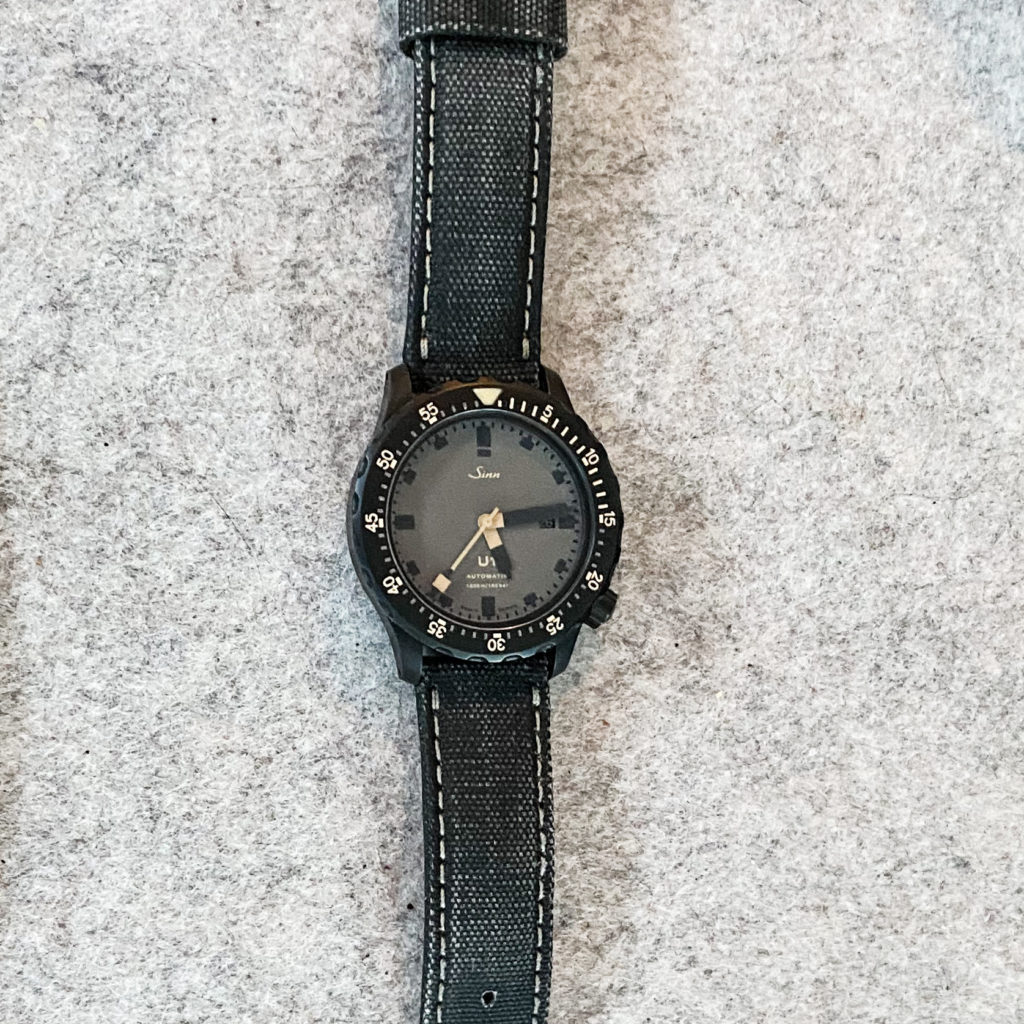
Another Limited Edition is the one made exclusively for the 35th anniversary of The Hour Glass in 2014 still remains quite popular despite its large edition of 350 pieces. Effectively, it’s a U1 SE, with inverted colors on the dial/hands-layout.
The Dune has a stronger military appearance than the U1 SE and a loftier price (RRP at around 3600 USD in 2015). In a way, the Dune represents a strange combination of submarine technology, diver watches and desert military ops. However, in contrast to other versions, this one works quite well.
Part Three: The negatives
Although I’ve spent a king’s ransom on Sinn U1’s, all that glitters isn’t necessarily gold. There are a few features of the watch that would warrant an upgrade.
Straps & Bracelet
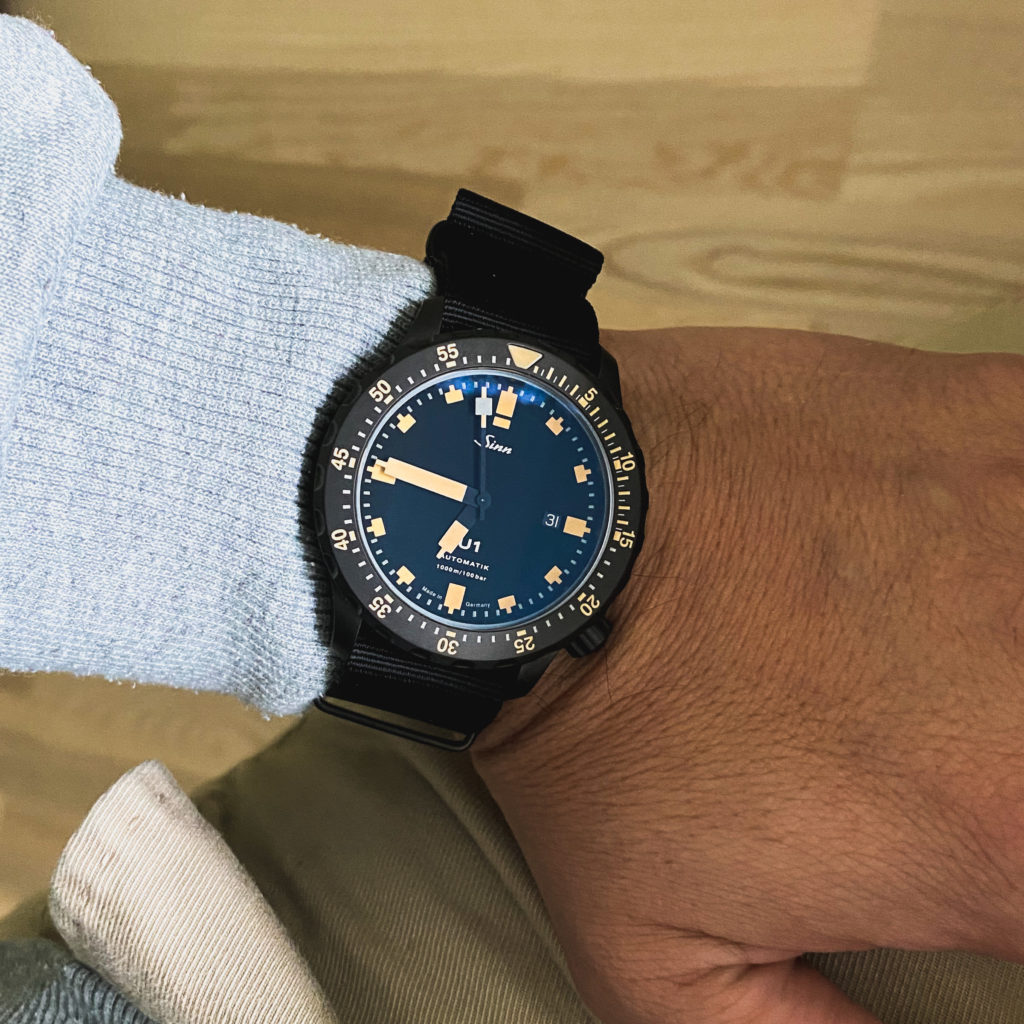
The U1’s come with either a bracelet, silicone strap or leather strap. Where the watch is and feels German in a good way, the straps and bracelet do not. The bracelet is beads blasted just like the case. It looks okay for the PVD coated versions, but the steel version with the steel bezel make the whole thing appear “gray”.
The silicone straps come in colorful versions. A combination of the dust-soaking material, the protruding logo and heavy clasp make the strap the least preferred option for me. Leather straps and dive watches aren’t a good combination in my book, call me conservative..
Lume, lume and lume
Anyone buying a watch with large white indexes and hands hope to have a serious contender for Friday night lume battle. With the U1, think again. The prospect lume monster is anything but as the glow fades fast.
The greenish C3 lume works fine with black, but blends less well with the blue-dialed pieces. Here, a fresh BGW9 would be a nice prospective upgrade. The lume is also unevenly distributed. The thin sections on the seconds hand are quite visible after a few minutes and are also outshined by everything else. The 12 o’clock lume pip on the bezel is also uneven for some strange reason.
External AR coating
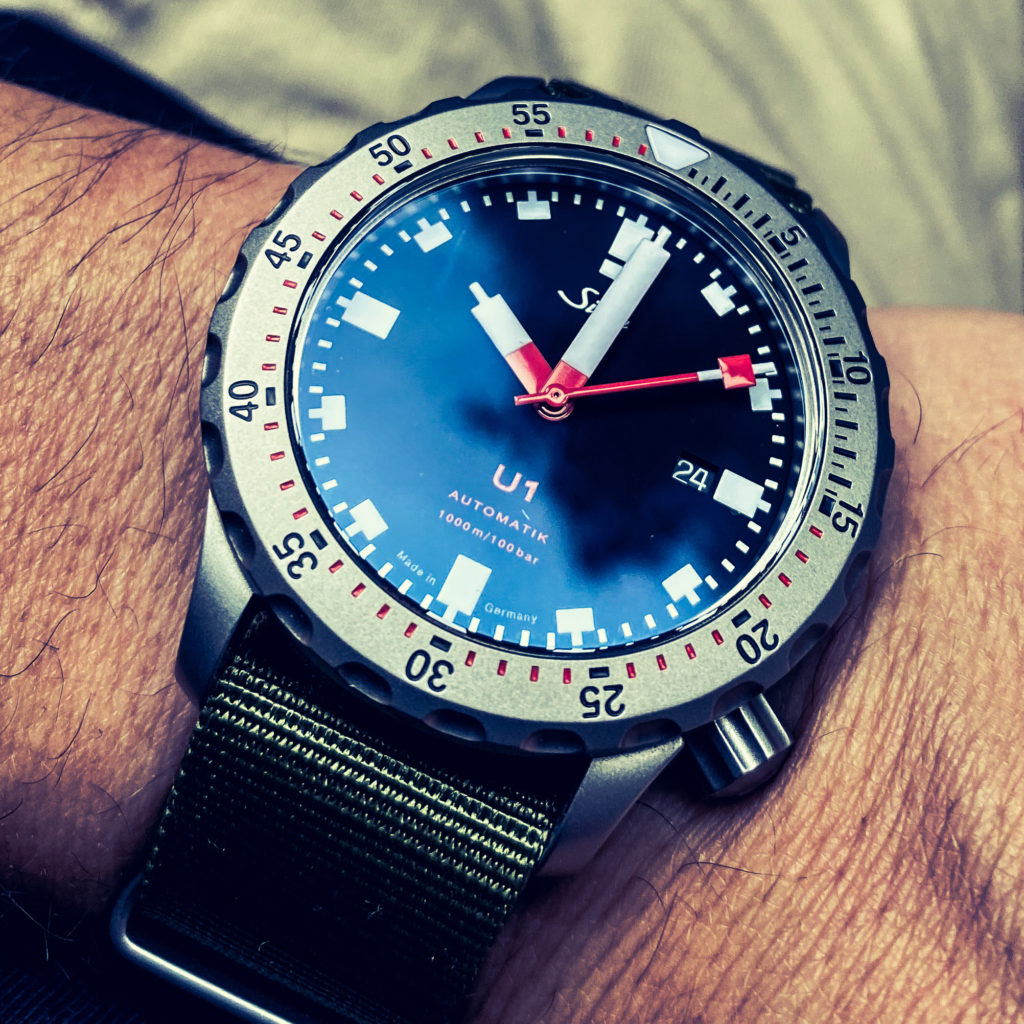
The has AR coating on both sides of the glass, making the dial very legible in most lights and angles. If clean, it can give that special appearance of the glass being completely invisible. It also amplifies the blue colors of the ambient light in a beautiful way against the black dials.
From a utility point of view, this makes sense and is well matched with the concept of the watch in one way. In another, it’s supposed to be a very hard and durable watch, intended to withstand repeated impacts, knocks and bumps.
Anyone who’s had a watch with externally AR coated glass knows that it will easily smudge and look scratched after a while. The scratches are not in the glass, but the polymer coating which also can’t be replaced.
Sinn can and will replace the glass during service, and one can argue that the glass will only have so much exposure over five years. I’d still prefer only the inside to be coated.
Bezel configuration

While satisfying the basic requirements of a diver bezel in an original way, the steel bezel versions offer very poor legibility. This is due to the black and red markings that have poor contrast against the steel. The PVD-versions are easier to read but since the bezel tracking line is quite small, it’s still more difficult to read compared to a standard diver bezel. Also, only the 12 o’clock pip has lume, satisfying the minimum requirement.
Part Four: Wearing the U1
The strap monster
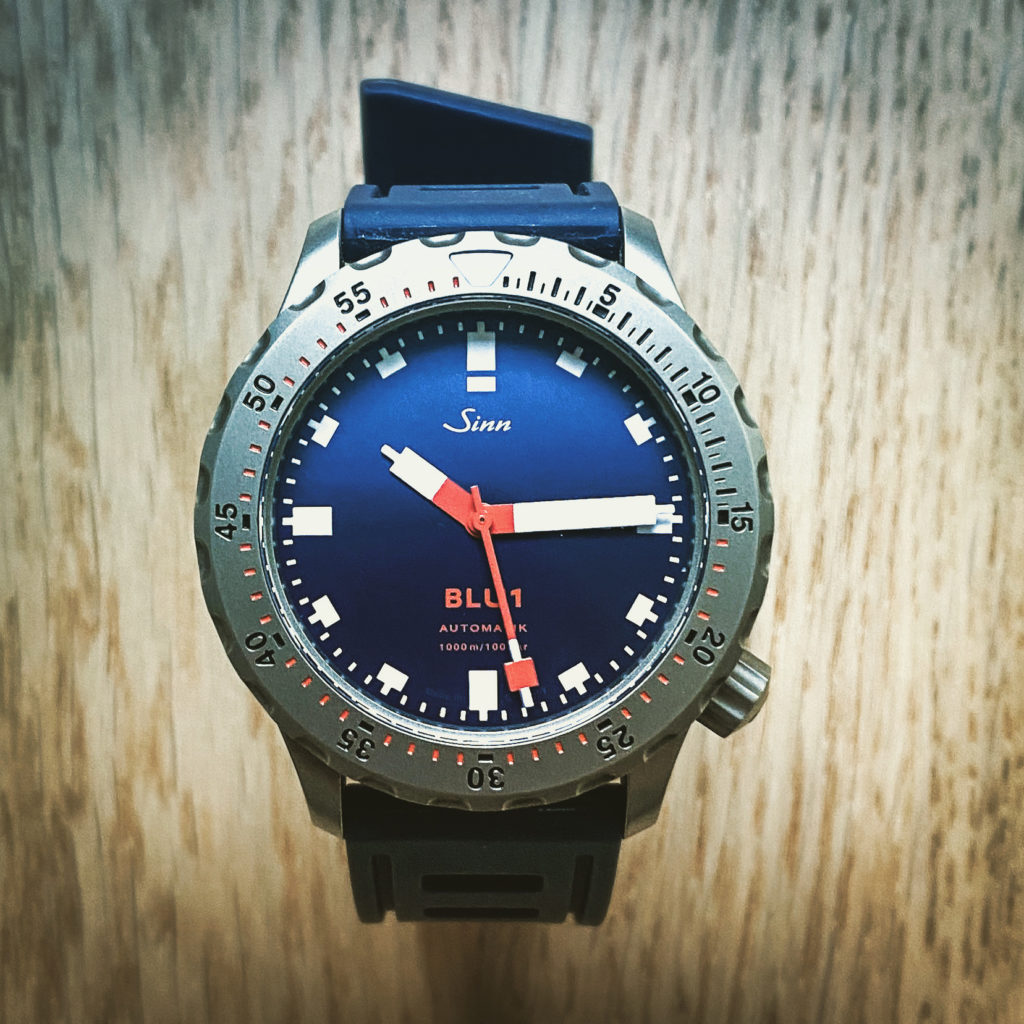
As related, the U1 is rather large and heavy, but wears remarkably well. The heavy clasp of the stock silicone strap and the heavy bracelet reduce the comfort. All my U1’s are therefore on either Isofrane, NATO or canvas straps.
In contrast to many other watches, the U1 is very versatile when it comes to strap combinations. A mix of bezel/dial layout and case/lug geometry makes e.g. NATO straps work better on the U1 than on many other watches. The seemingly infinite array of combinations also bring out different appearances of the watch. The U1 and the U1 S E are both regularly shifting between two different NATO straps each during summertime, much depending on what I intend to wear.
The U1 is not a formal watch
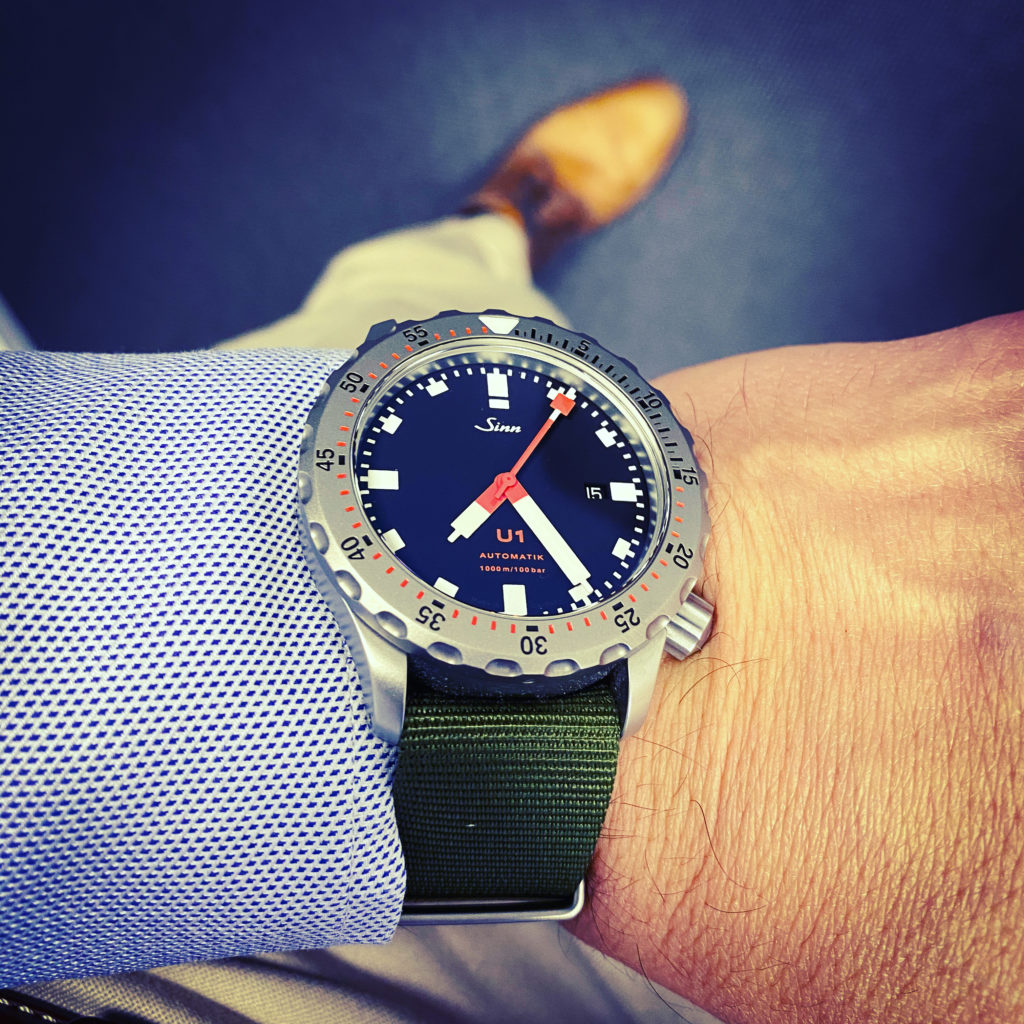
The debate on whether a diver watch can or shall be used when dressed up doesn’t apply to Sinn U1. This watch obviously doesn’t go well with a jacket. It’s too big, too thick, too matte, and too emphasized to be anything but an obstacle when trying to dress up. The dress code in my office is quite informal, so jackets are off, my shirt sleeves folded up meaning that the U1 gets to see some serious desk diving after all.
Still, one gets the best out of the U1 in a sporty, casual situation. Especially the colorful Isofrane straps make my two blue U1’s feel ready for action.
An everyday watch?
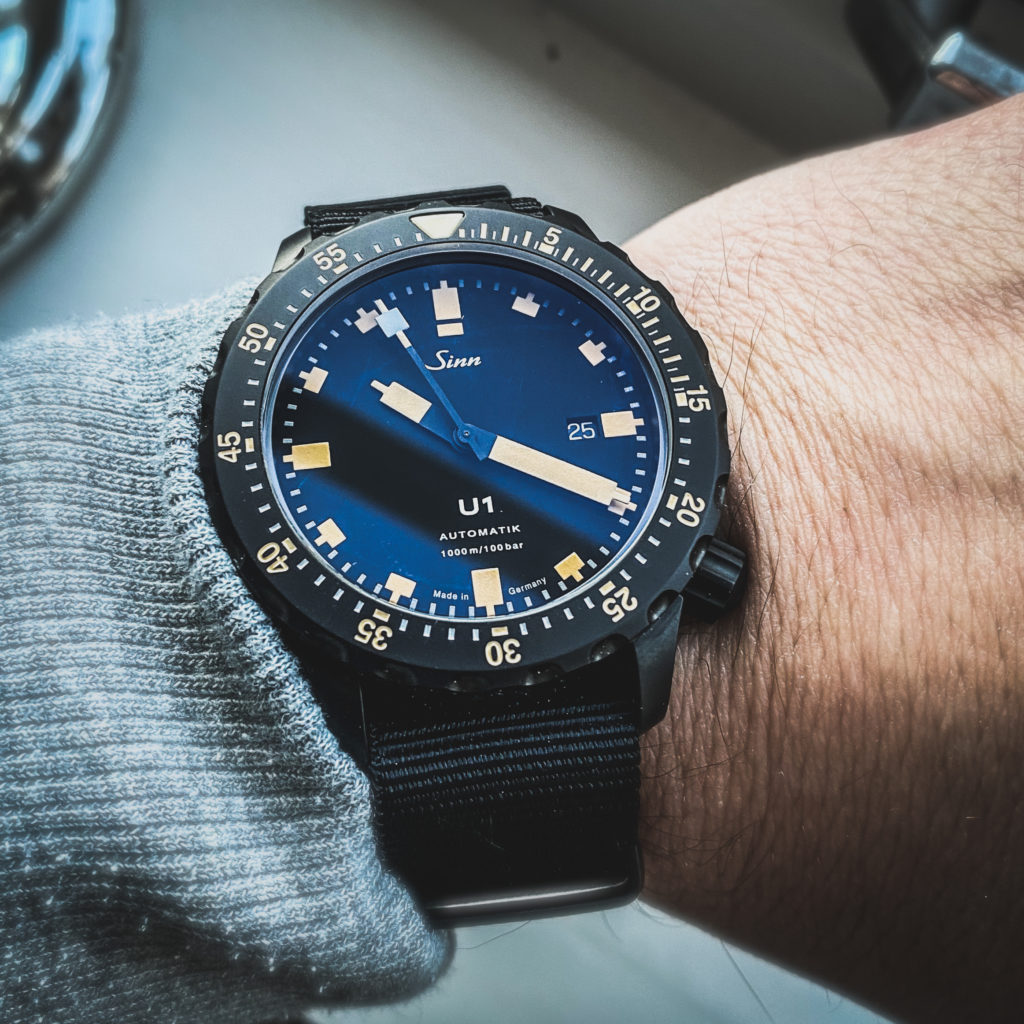
Those gifted with the peace of mind to have only one or just a few watches normally make great choices for the so-called everyday watch. I.e., the watch you wear at all time except for the Nobel price ceremony or when storming an enemy machinegun position. Would the U1 be an excellent choice for that? Possibly.
The date function makes the watch incredibly versatile in terms of everyday use. Diver watches are also predominant in that category. One way for me to find out if a watch is an everyday watch is when I decide to bring only one watch when travelling. Unfortunately, the Sinn U1 is typically not my first choice.
Then what…?

Although the U1 is not a my choice for an everyday watch, it’s still a beast to own in combination with other watches. Its originality, expression and versatility are all solid reasons alone to have one (or in my case four) in the box and regularly on the wrist.
Part five: Concluding on the U1
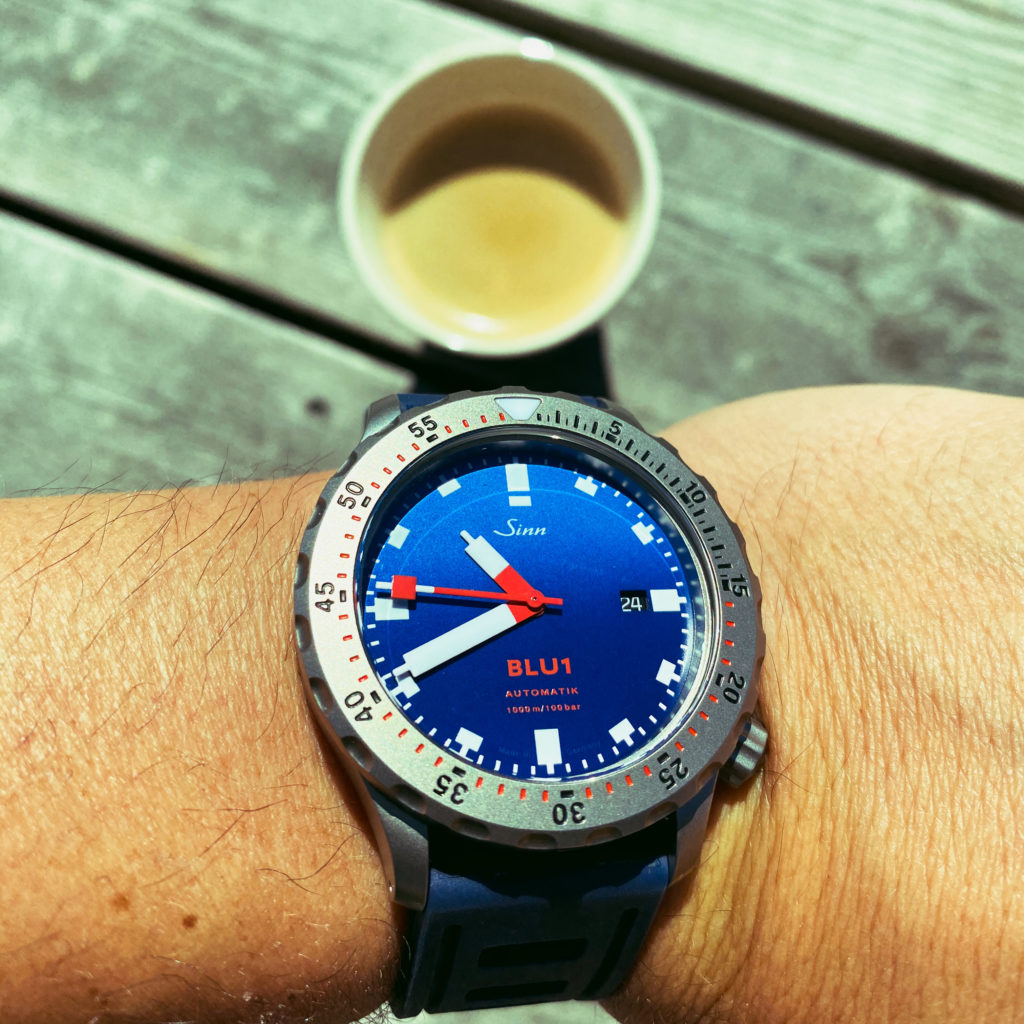
Despite having tried to give a balanced view of the Sinn U1, I’m completely biased towards this watch. I simply love it and am truly grateful for all four pieces in the box. They get a lot of wrist time, for good reason.
The quality of Sinn watches is remarkable. The feeling of wearing the watch in right circumstances and with a suitable strap, is very satisfying. The combination of extreme depth, durability and sportiness makes it the perfect watch for me at most circumstances except the formal ones.
The Sinn U1 is not there to please the mainstream. That suits me equally well. Or as a fellow watchman expressed it “Only true watch geeks wear Sinn”.
